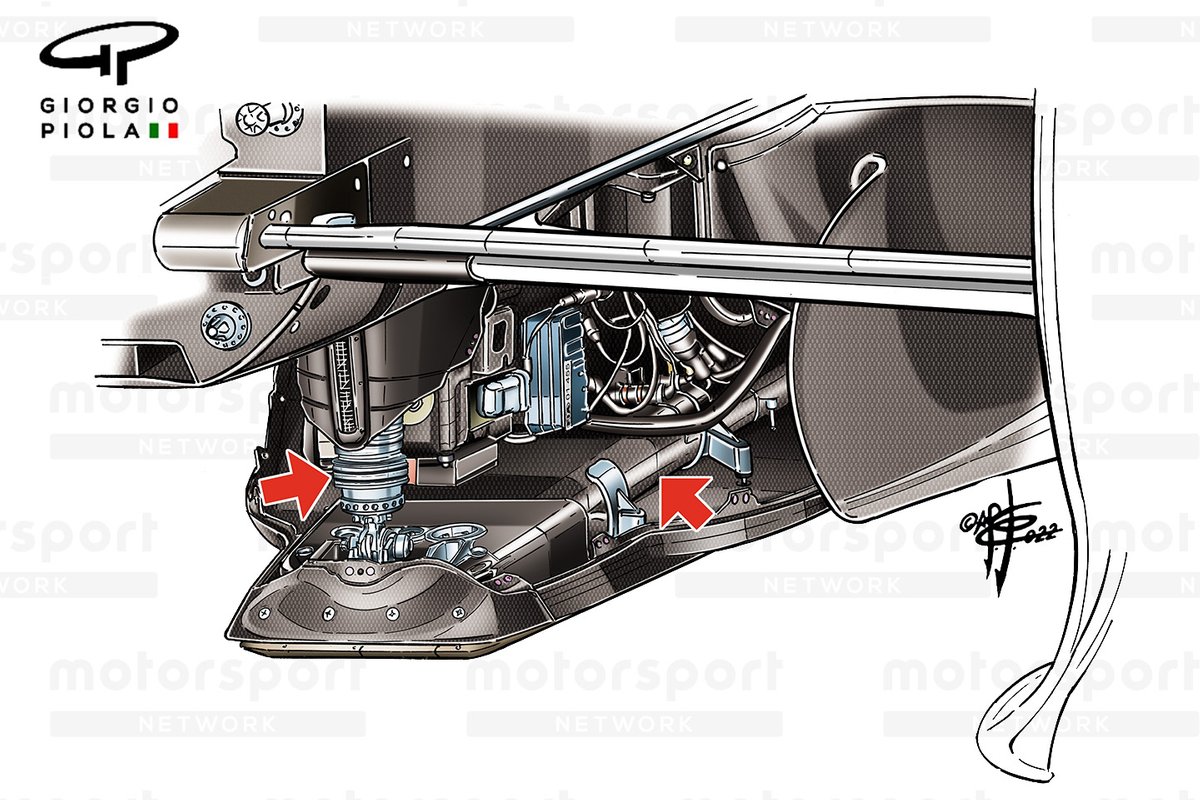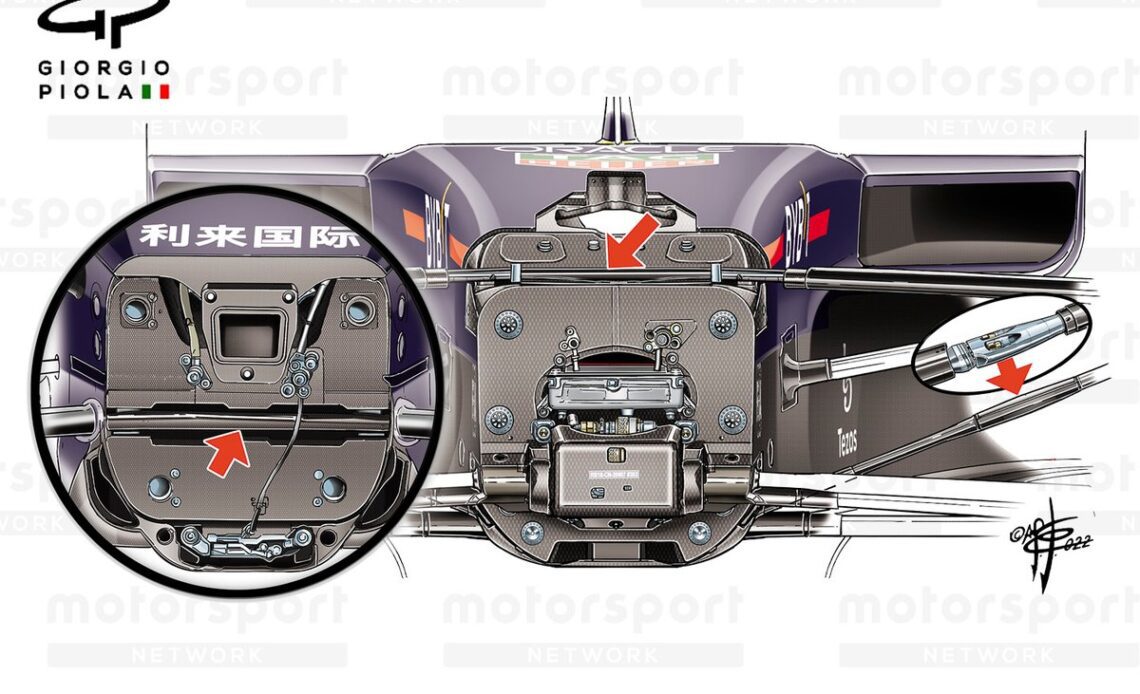What has been perhaps most remarkable about its campaign is that it did not start the year as the fastest car – it had to overhaul Ferrari’s F1-75.
There is no magic bullet that explains why the RB18 has proved so effective for the current rules. Instead, it’s a combination of factors – some designed in from the start and others that have been developed – which work together in unison to create a brilliant overall package.
Let’s take a look at some of the interesting features of the RB18 – some of which are unique and others that have been adopted by other teams.
Suspension
Red Bull created a new normal when it came to the overall suspension layout that was in use for the last regulation era between 2009-2021.
Since the RB5, the team adopted a pull-rod rear suspension at the rear and push-rod at the front. This was considered the best option, aerodynamically speaking, under that particular rules set as all outfits settled on it being the best way to approach things.
There were some outliers from time-to-time, though, as the pull-rod method was also tried at the front end.
Having considered the impact of suspension on the new 2022 cars, Red Bull flipped the script for 2022, opting for a push-rod layout at the rear to clear space for the enlarged diffuser and pull-rod at the front of the RB18.
Red Bull Racing RB18 front suspension
Photo by: Giorgio Piola
The other interesting feature in regards to the RB18’s front suspension design, is that the team continues to use a single element wishbone element, albeit this year it’s applied to the top, forward most arm, as the setup is flipped over from before (inset left).
As part of the repackaging efforts for 2022, the steering assembly that had previously been buried within the chassis over the last two seasons has been returned to its more natural habitat at the front of the bulkhead.
Bib tray
On the topic of sprung elements, it’s worth noting the arrangement used to add some compliance to the car’s bib region.
In Red Bull’s case, this comes in the form of a Belleville spring, whereas other options – such as a damper, coil spring or leaf spring – are being employed up and down the grid to varying degrees of effectiveness.

Red Bull Racing RB18 splitter detail
Photo by: Giorgio Piola
The use of a Belleville spring arrangement not only allows for a compact installation but it can also result in less vibration, something that’s perhaps worth noting as just…
Click Here to Read the Full Original Article at Motorsport.com – Formula 1 – Stories…

